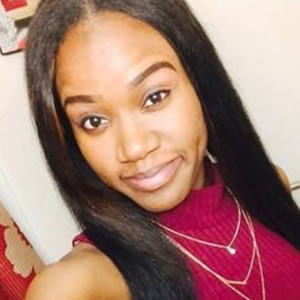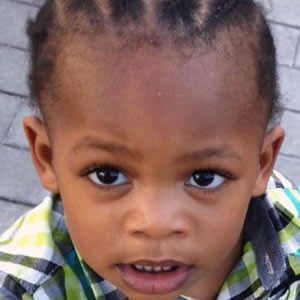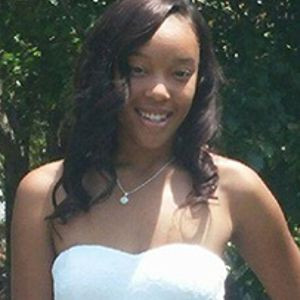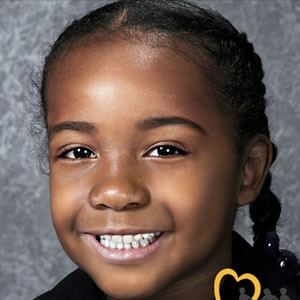How Two Women are Helping Black Families Find Their Missing Relatives
Oprah Daily
Leigh Kunkel
September 22, 2021
When 24-year-old Tamika Huston vanished from Derrica Wilson’s hometown of Spartanburg, South Carolina in 2004, Wilson, a former law-enforcement officer, learned that Huston’s family was struggling to get any media coverage of their missing relative. The story stuck with her.
In 2007, Derrica and her sister-in-law, Natalie Wilson, who worked in public relations, began looking into whether lack of media coverage was an issue that affected missing Black individuals more broadly—because, as Natalie puts it, “we definitely don’t see ourselves often in the news.” What they found was upsetting: In 2008, nearly 30 percent of missing persons in the United States were people of color. That year, the pair started the Black and Missing Foundation.
“The foundation was created out of a necessity to help us find us,” Natalie says. One 2010 study found that while 33.2 percent of missing children reported to the FBI were Black, only 19.5 percent of media coverage of missing children was afforded to those cases.
The statistics from a 2015 study were even more dire: missing Black children made up 35% of the National Crime Information Center’s cases, but only received seven percent of media references. Now, Black and Missing works to rectify that imbalance through sustained media awareness campaigns. Natalie says that the tides are slowly shifting: “Media coverage has increased since our inception. We have come a long way but have great strides to make.”
This kind of disproportionate press coverage has recently been illustrated with the story of Gabby Petito, a 22 year-old New York woman who went missing in late August 2021 while traveling out west with her fiancé. The disappearance of the young white woman quickly triggered a cascade of media attention that resulted in the recovery of her remains in remote Wyoming within less than a month. Says Natalie: “Gabby Petito’s was a horrible death. For her family, through the media and social media, resources were mobilized to help find her. Let’s push the same levers to help other countless missing victims garner the same level of awareness.”
While PR and police involvement are essential to recovering missing persons, both of these factors disproportionately disadvantage the Black community. Studies have found that Black individuals are significantly more likely to be perceived by law enforcement as the perpetrators of a crime than the victims; for missing persons, this means that Black children are often initially classified as runaways/“perpetrators” rather than victims of foul play.
The biased perception works hand-in-hand with a lack of media coverage, since runaways are rarely covered on the news. White missing persons, particularly white women, are often presumed to be in danger, and thus receive immediate and thorough media coverage. The disparity is known colloquially as Missing White Woman Syndrome.
Natalie and Derrica work with families to keep their loved ones’ stories in the spotlight, particularly when there is an anniversary or when new information is discovered. In addition to maintaining their own website database of missing Black individuals, the organization also posts regularly on social media and helps families coordinate with media outlets to increase coverage around significant events. Many times, Natalie says, people assume that no news means that the missing person has been found.
By keeping the cases in people’s newsfeeds, Black and Missing ensures that the missing are still top of mind for people in their communities. National media attention is also essential for solving disappearances: When Natalie and Derrica appeared on The View in 2013, one of the cases they highlighted received a vital tip within 15 minutes of the broadcast, reuniting a grateful family with their daughter.
“Intense early coverage of these cases ensures that the community is looking for the individual and gives us a greater chance of recovery,” Natalie says. After the first two to three days of a person going missing, potential witnesses’ memories start to fade and leads are likely to dry up; early coverage helps mitigate these factors by encouraging people to share relevant information as quickly as possible. With older cases that are not actively investigated, continued media coverage can lead to tips from the public that might give law enforcement a fresh direction to pursue.
Black and Missing brings attention to dozens of cases like these every year. Here, we’ve shared just a few of many; if you have any information about these or any other case featured on Black and Missing, you can report it using their anonymous tip line.
Kierra Coles

Chicago, IL
Missing since October 2, 2018
Kierra Coles, 26, was last seen near her home on the south side of Chicago. Coles was three months pregnant at the time of her disappearance. Police have been reluctant to share information with both the public and the family, saying at one point that investigations had been suspended, and later, that they were working jointly with the FBI and the U.S. Postal Inspection Service. Police released a statement in July of 2020 announcing that they had exhausted all leads in Coles’ disappearance and were suspending the investigation. In June of 2021, her family announced a $45K reward for information about the case.
Diamond Bynum and King Walker

Gary, IN
Missing since July 25, 2015
21-year-old Diamond Bynum and her nephew King, 2, were visiting her parents’ home when they went for a walk and never returned. Bynum loved spending time with her nephew, but her diagnosis of Prader-Willi Syndrome, which causes physical and mental developmental delays, meant that she never cared for him unassisted. Because of this, her father says, it’s unlikely that the pair could have traveled far on their own. Bynum might be most easily identified by her short stature and limp.
Tyarra Williams

Greensboro, North Carolina
Missing since January 7, 2016
19-year-old Tyarra Williams dreamed of being a teacher and working with special needs students. On January 6, 2016, after eating dinner with her family and boyfriend, she said that she had to go meet a friend; Tyarra never returned. Cell phone data showed that she made it safely to the friend’s apartment and then seemingly indicate that she disappeared on the walk home. Though two other young women vanished from the area that same week, their cases were ultimately determined to be unrelated to Tyarra. Her family is offering a $10,000 reward for information leading to her safe return.
Arianna Fitts

Oakland, California
February, 2016
Two-year-old Arianna Fitts’ disappearance happened close in time to the murder of her mother, Nicole, whose body was found buried in a Bay Area park on April 8, 2016. The FBI does not believe Arianna was with her mother at the time she was killed. According to the San Francisco Police, Arianna was last seen in February 2016 while in the care of her baby sitter. In June of 2021, the FBI announced that there was new “digital and biological” evidence in the case. They encourage anyone who had interactions with Arianna or Nicole to come forward. The San Francisco Police Department is offering a $100,000 reward for information on Arianna’s whereabouts.
Photo credit: Oprah Daily

